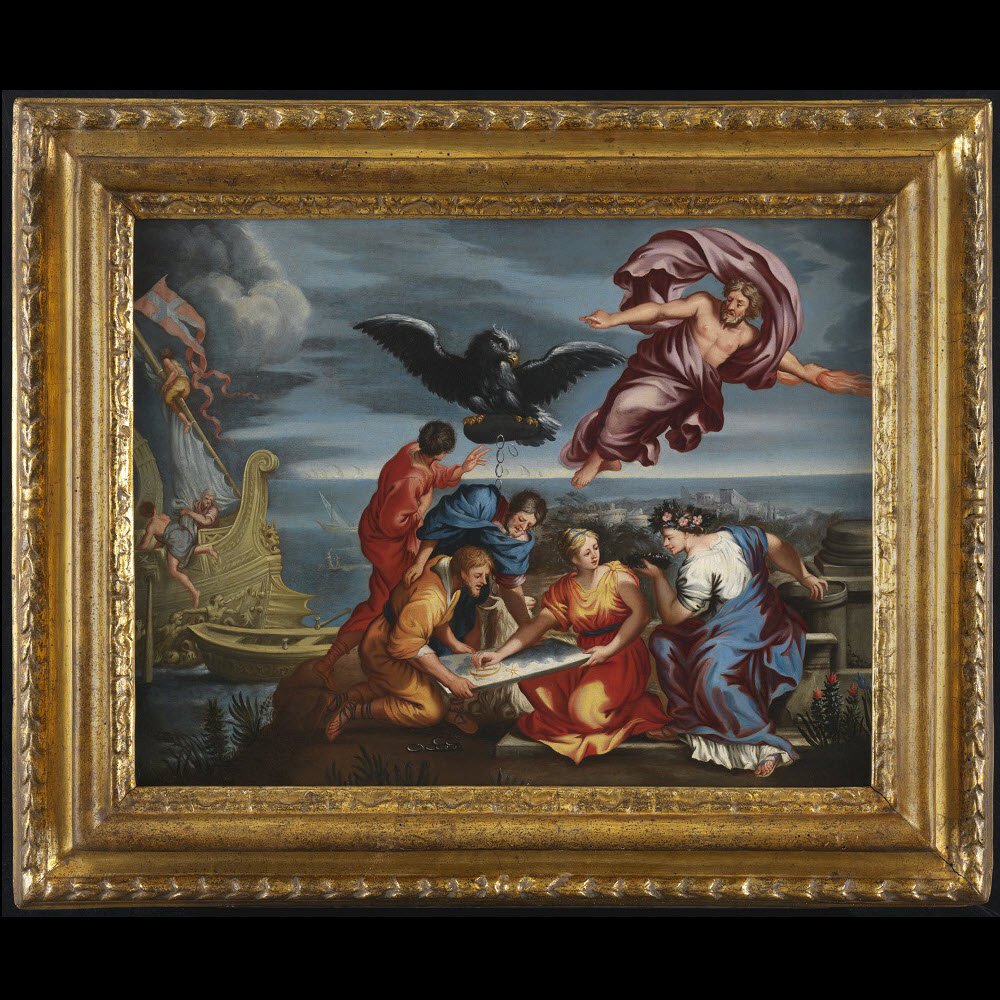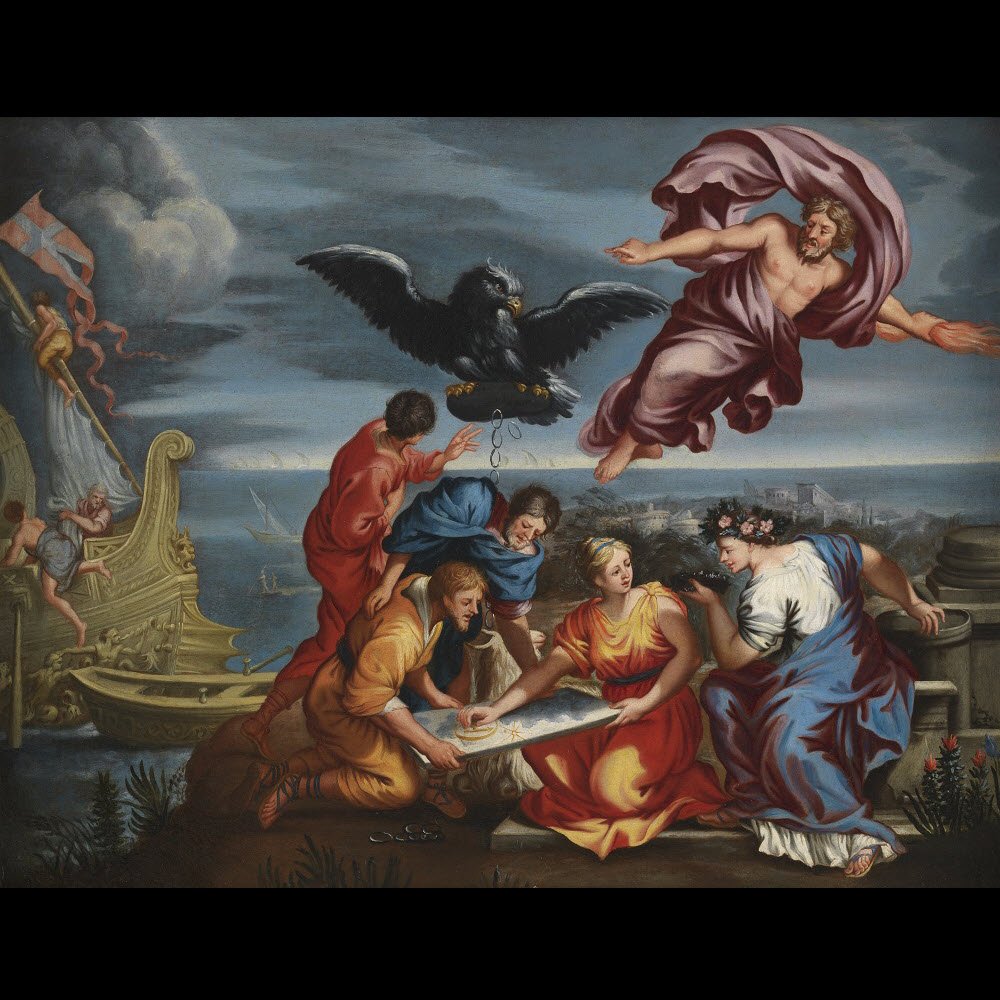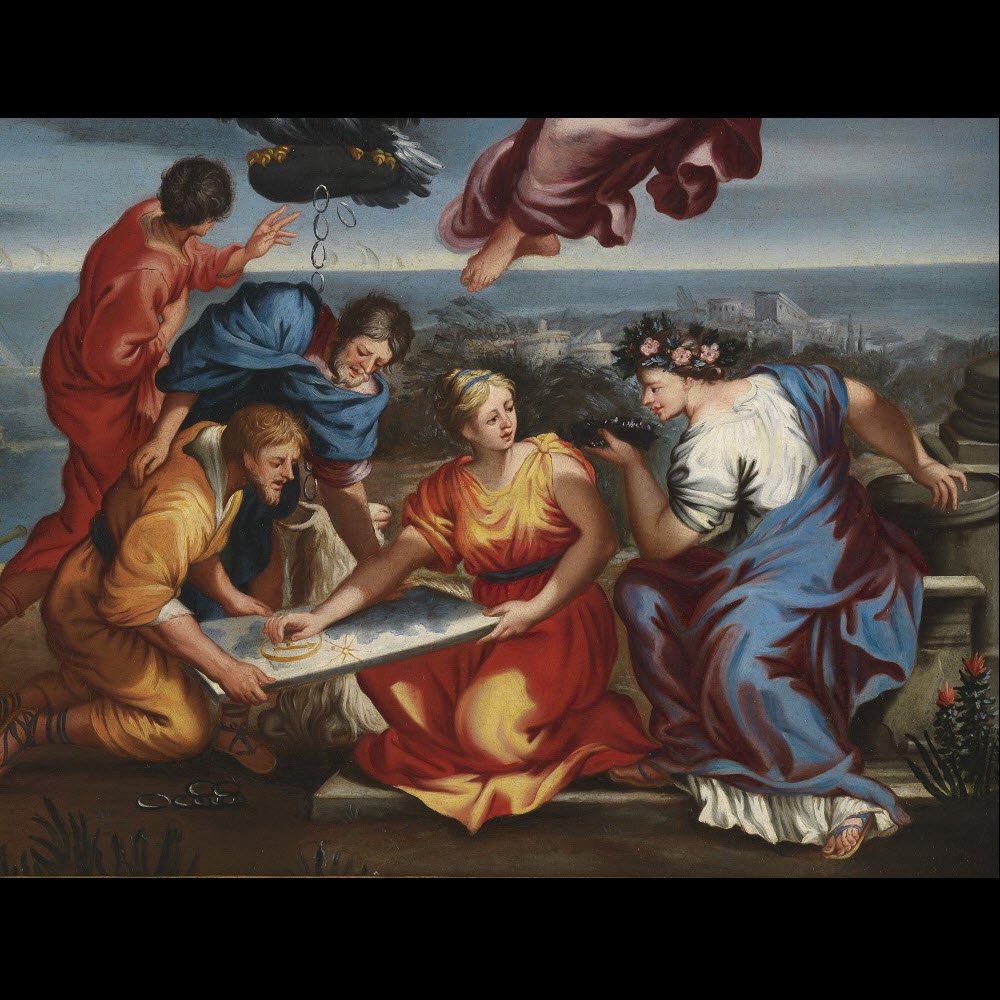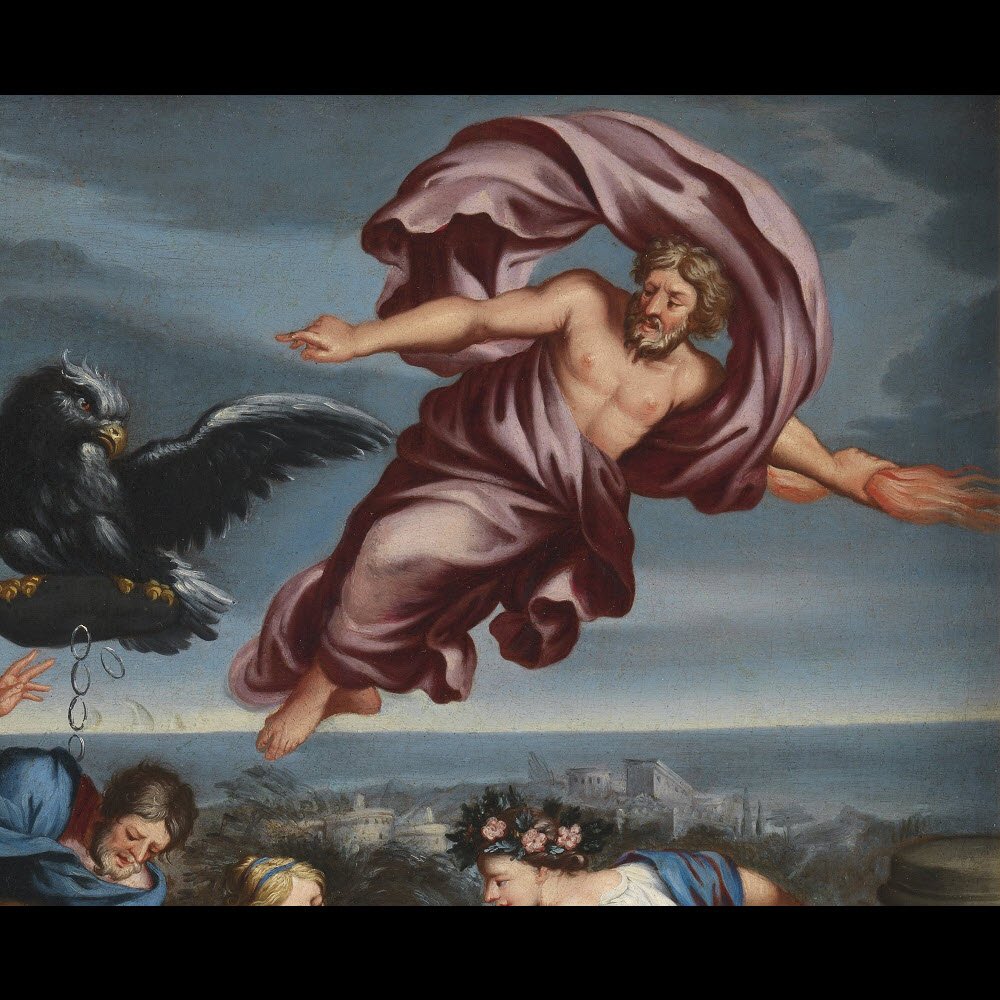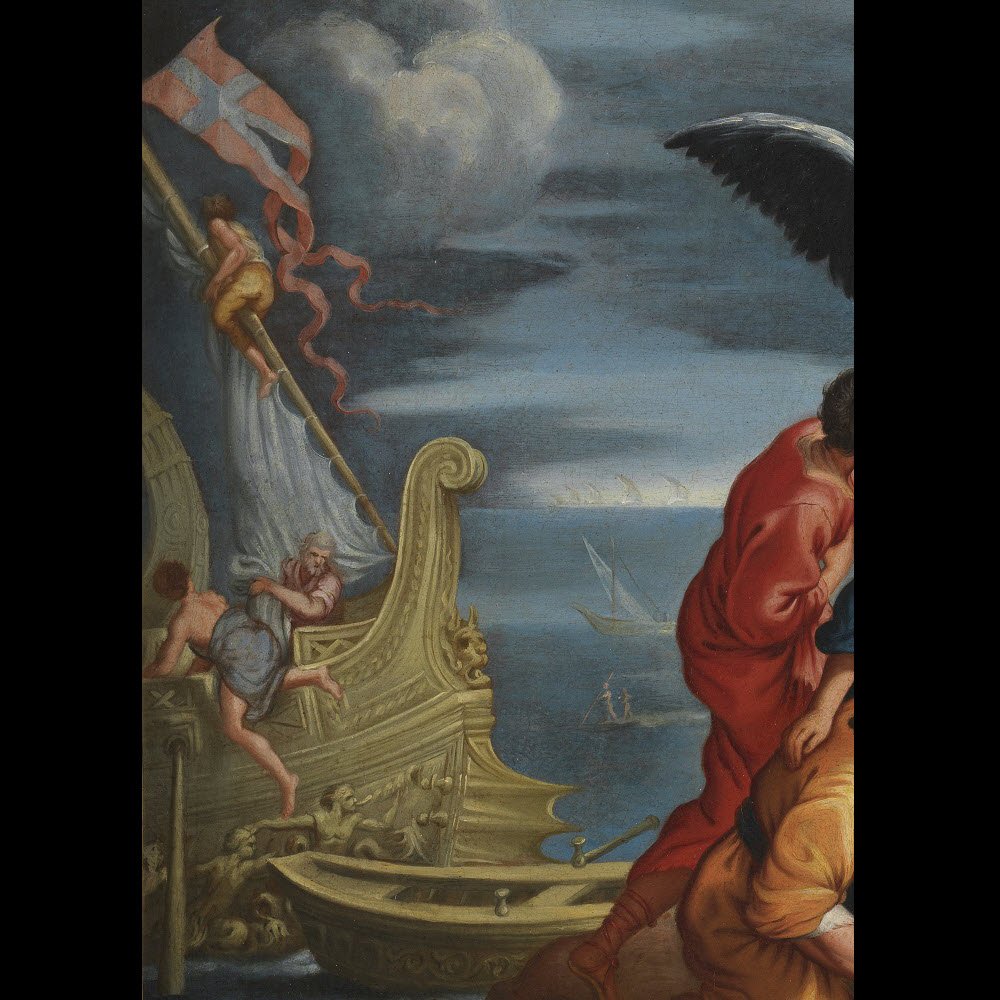"Roman School Of The 17th Century - Allegory Of Navigation After Pierre De Cortone"
Oil on canvas.The engraving of Charles Audran (1594 - 1674) after the work of Peter of Cortona (1596 - 1669) gives valuable indications on the painting presented by the gallery. The British Museum in London and the Biblioteca Casanatense in Rome keep a copy. If the dating of this engraving is uncertain (between 1623 and 1640), it is known that Audran is particularly active in Rome between 1630 and 1633.
As for our painter, note that he frees himself somewhat from the original painting by removing the arms of the Barberini family. T
his composition, which has a symbolic character, is attached to the Accademia Parthenia created for the cult of the Virgin in the Roman College of the Jesuits under the patronage of the Barberini family. Among the institutions of the Renaissance, the Jesuits have, for educational purposes, strongly propagated the formula of the Academy, meeting place, exchange of elites on Letters or scientific themes.
In the center of the stage, dressed in a shimmering orange-yellow fabric, a woman kneels in front of a maritime map holding a compass. On his left, the figure crowned with flowers in the blue toga gives him a braided foliage. In the sky, Jupiter indicates a direction and orders the eagle. The bird holds between its claws a magnetic stone called "Arcadis Nodis" (literally "hidden links"). This powerful magnet draws towards him the metal rings placed on the ground under the map. On the left, a ship docked, a man tied the sails and a woman jumped on a boat. In the background, outline the contours of a port city with imposing monuments and many veils interrupt the horizon.
If the mythological references - Jupiter, the goat Amalthea, its attributes the lightning and the eagle - are obvious, the reading of this work offers an interpretation of a great richness which could not remain there. How not to see the keen interest of the period for science, geography, magnetism, travel?
It is, indeed, a magnetized stone that attracts the iron rings which constitute a chain held by an invisible and mysterious force. The hanging rings and the stone placed at the top allude to the magnetic force and the poles. The geographical exploration as for it, appears with the map, the compass, the wind rose. And we know the role of Jesuit missionaries in the colonization of the new world to evangelize the people. In this allegory, the swirling movement, the mobility of the light, the liveliness of the palette, the precision of the forms and the harmony of the composition, testify to the originality of Pierre de Cortone but also gives to see a singular work to the undeniable qualities.
We chose to present the work in a Piedmontese frame with an inverted profile carved and gilded in the mecca of the seventeenth century.
Dimensions: 41 x 53.5 cm the view - 60 x 72 cm with the frame
Pietro Berrettini said Stone of Cortona (Cortona 1596 - Rome 16.05.1669) Painter and architect, Pierre de Cortona, is the pupil of the painter Andrea Commodi with which he goes to Rome. There, he completed his training by carefully studying Raphael and the multitude of works of great masters that Rome offers. His religious and mythological paintings are among the first expressions of Baroque style. The glory is acquired with the large frescoed decoration of the Barberini Palace (1633-1639), a key work of the Roman Baroque, where the glorification of the Barberini family and the temporal power of the Church is imperative. He also undertook the decoration of the Pitti Palace (1637-1641), the frescoes of the story of Aeneas at the palace Pamphili (1651-1654).
The work of Peter of Cortona, inspired by the Carracci, Rubens but also Titian and Mannerists, offers an original style and allows to express the splendor and power of the representatives of the civil and religious power.
Realizing the church of St. Luke and St. Martine, the facades of St. Mary of Peace, Santa Maria in via Lata, it occupies a prominent place in the development of Baroque architecture.
References and bibliography: - Biblioteca Casanatense, Rome. Ref. RML 0348863 - Databas British Museum. 1917, 1208.761 - Pietro da Cortona. Giulio Briganti




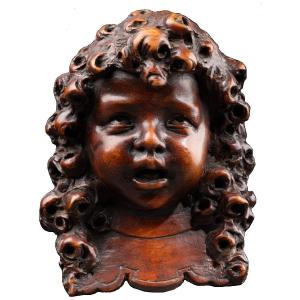
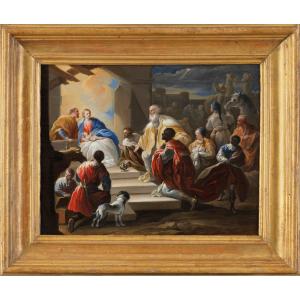

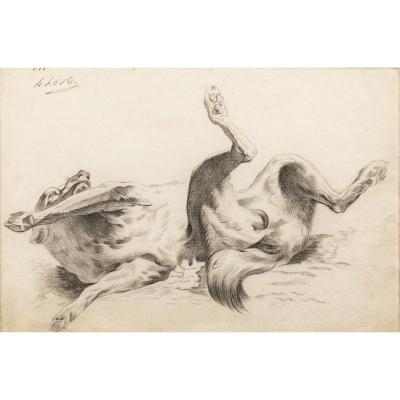

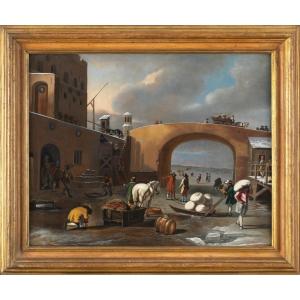


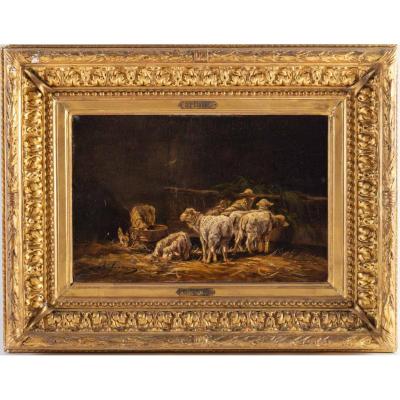
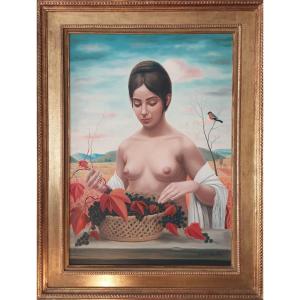

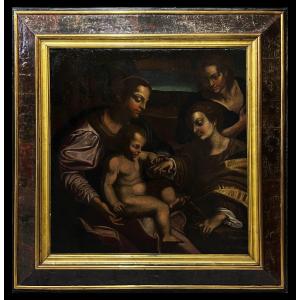




 Le Magazine
Le Magazine Rivista Artiquariato
Rivista Artiquariato TRÉSORS magazine
TRÉSORS magazine
